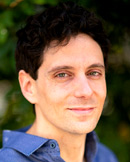
The need to create quantum states of light, such as entangled photons, arises from their importance in the fields of quantum information and quantum optics. In recent years, quantum cluster states were used in quantum computation, entangled photons were used to demonstrate quantum teleportation, and quantum hyper-dense coding protocols enable breaking the classical limit for information transfer. All these applications require efficient methods for generation of quantum light.
Our project develops new approaches for creating many-photon quantum light, by using recent advances in quantum electrodynamics and quantum optics. These advances are especially promising for creating deterministic, heralded, entangled photon sources.
Linear recursions with integer coefficients, such as the recursion of the Fibonacci sequence, have been intensely studied over millennia, yet still hide interesting undiscovered mathematics. Such a recursion was used by Apéry in his proof of the irrationality of certain values of the Riemann zeta function. Similar recursions can prove the irrationality of other fundamental constants such as π and e. However, it is not generally known under what conditions a linear recursion can be used to prove irrationality.
Our project develops new hypotheses and proofs for linear recursions. Specifically, we generalize Apéry’s work, finding the conditions for which similar recursions can be used to prove irrationality.
Looking forward, we would like to search for a wider theory on sequences created by any linear recursion with integer coefficients. Such results can help develop systematic algorithms for finding formulas for fundamental constants and contribute to ongoing efforts to answer open questions like proving the irrationality of values of the Reimann zeta function (e.g., ζ(5)).
Fundamental mathematical constants like e and π are ubiquitous in diverse fields of science, from abstract mathematics to physics and biology. For centuries, new formulas relating fundamental constants have been scarce and usually discovered sporadically.
Our project develops systematic approaches to leverages algorithms for deriving formulas for fundamental constants and help reveal their underlying structure.
This research reverses the conventional approach of sequential logic in formal proofs. Instead, our algorithms utilize numerical data to unveil mathematical structures, trying to play the role of intuition of great mathematicians of the past to find leads for future research.